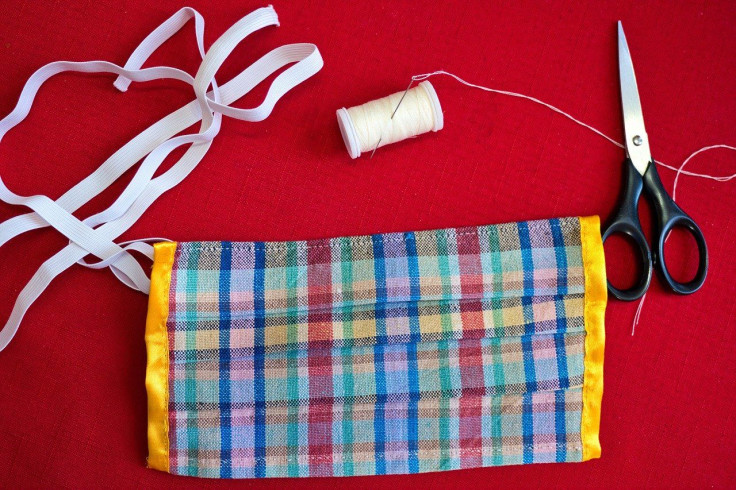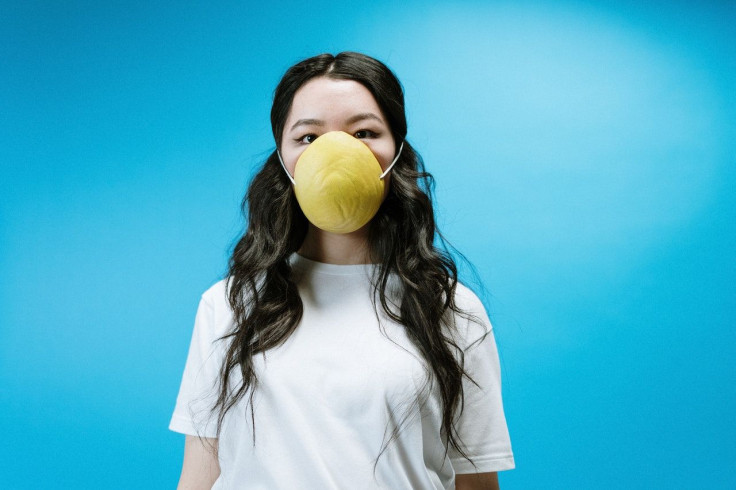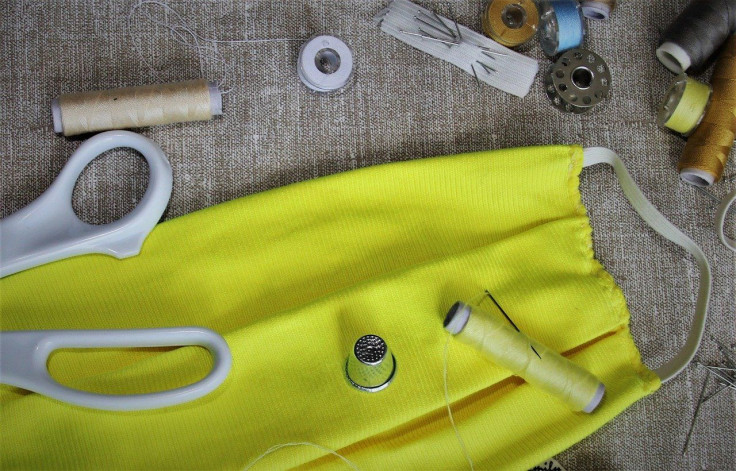More Household Materials For D.I.Y. Masks Revealed By Researchers

KEY POINTS
- Face mask shortage in the U.S. led many to create masks out of common everyday materials
- Pieces of denim, bra pads, coffee filters, and tea towels are among these materials
- Some perform better than others in filtering particles
Lockdown orders in many areas across the United States forced non-essential businesses to cease operations. Fabric stores are among the businesses that temporarily closed down because of the pandemic. As a result, Americans have started scavenging around their homes for potential materials that can be used to create homemade masks. Today, researchers revealed the materials you can easily find in your home and be used to create these masks.
Canvas And Denim
The material that your jeans are made of can be used as an effective face mask. According to a Smart Air report, canvas and denim can filter over 90% of large particles and approximately 30% of small particles. Smart Air is a social enterprise that promotes cheap and data-backed air filters to deal with indoor particulate air pollution.
You can search for an instructional video on how to create a no-sew mask using canvas or denim. If you know how to sew, there are instructional materials, both video and text, that can be used as a guide in making a simple mask pattern.
T-Shirts
Cotton T-shirts appear to be the most popular material used in do-it-yourself masks. There are a lot of variables; however, in T-shirt materials and their performance differs in lab tests. For instance, a stiff and totally uncomfortable T-shirt is likely to do a great job as a mask compared to T-shirts made of lightweight and breathable materials.
Virginia Tech researchers tested one layer of an old cotton shirt and found it captured 20% of particles up to 0.3 microns. It also was able to capture 50% of bigger particles.
Meanwhile, a 2013 study by the University of Cambridge researchers found that two layers of T-shirt can capture approximately 70% of larger particles. In a test conducted by Smart Air, two layers of shirt captured around 77% of large particles and 15% of smaller particles.

Bra Pads
The rounded shape of a bra resembles a conventional medical mask. Best of all, they already have elastic straps that can be used to secure the mask on your face. Smart Air said it already tested a sponge and muslin bra pad and found it can filter out 76% of large particles and 14% of small ones.
Cotton Sewing Fabric
A two-layer mask of cotton and flannel is one of the best materials tested in a Wake Forest Baptist study. It rivaled the surgical mask’s efficiency when it comes to filtering particles. Quilters prefer the high-thread-count cotton fabric because of its durability, and it does a great job of filtering particles.
Disposable Floor Sweep Pads
Some create masks made of disposable sweep and mop pads. Smart Air subjected a thin disposable floor cloth to a test and found it filtered only 7% of small particles. A thicker pad, however, might perform better.
Paper Towels And Shop Towels
Many Americans are using disposable towels to create a simple face mask or to have it function as an inside layer to fabric mask. Smart Air found that two layers of paper towels can filter 96% of large particles and more than 30% of small particles. On the other hand, blue “shop” towels, a disposable absorbent towel typically used by mechanics, were found to filter 87% of large particles and around 19% of small particles.
Reusable Shopping Bags
Reusable shopping bags made of nonwoven polypropylene were also tested by Smart Air and were found to filter 73% of large particles and 11% of small particles.

Tea Towels
A “kitchen towel” was used by Smart Air in its test and found that the material filtered most large particles and 48% small particles. Tea towels became the mask material of choice following an August 2013 study conducted by researchers from the University of Cambridge. They found that the tightly woven absorbent material fared well compared to a medical mask.
Coffee Filters
The results are mixed for coffee filters. While the materials performed well in tests, some of them are not that breathable. The best option appears to be the thin, basket-type coffee filter placed between cotton layers.
Pillow Cases And Sheets
A fabric made of 100% cotton with 120-thread-count sheets was tested by Smart Air and found that the material filtered 90% of large particles and 24% of small particles. Two layers of pillowcase fabric closely resembled the efficiency of a surgical mask when it comes to large particles. In another study, Missouri scientists found that four layers of a 600-thread-count pillowcase material matched the filtration capability of a surgical mask.
Scarves And Bandannas
There are many types of materials used in scarves, which is why a light test your best option when choosing the material you want to use. Most cotton bandannas, however, are fashioned out of very lightweight cotton. According to Smart Air, even when it is folded over four times, it will not accord you with much protection. The material performed poorly in the Smart Air tests.
Vacuum Bags And Air Filters
Scientists looking for an effective material that can be used in making alternative masks for medical workers cut up several layers of air filters and also tested HEPA vacuum bags. They found that while both materials worked very well, they also have substantial downsides.
In the case of air filters, when they are cut, they can release fibers that can be harmful when inhaled. To minimize the risk, the filter material must be sandwiched between two layers of heavy cotton fabric when made into a mask.
Vacuum bags, according to scientists, are good filters, but they are not that breathable. Furthermore, some brands of these bags can contain fiberglass and must not be used in covering your face.
© Copyright IBTimes 2024. All rights reserved.





















